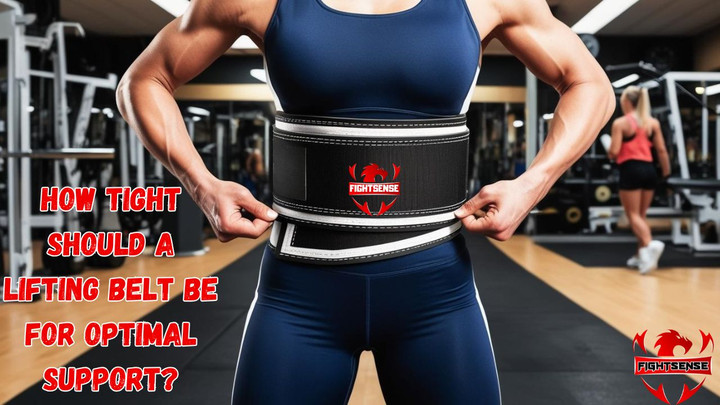How Tight Should a Lifting Belt Be for Optimal Support?
25th Mar 2025
Your performance and safety will much improve if you find the correct tension for your lift belt. While one that's too loose won't provide the core support you need, an overly tight belt will limit your respiration. Depending on the type of lift, your body type, and your goals, we will discuss in this article the ideal weightlifting belt tightness.
Key Highlights:
-
A lifting belt should be tight yet still allow for simple breathing.
-
Your body type and the kind of lift determine the fit.
-
Belts for weightlifting help to strengthen the core and lower injury risk.
-
Lever belts with adjustable tension.
-
Your belt should help your core without limiting motion.
What Does a Lifting Belt Do?
Through higher intra-abdominal pressure, a lifting belt helps stabilize your core. Protection of your spine during big lifts depends on this support, which also guarantees correct posture and core engagement. When pressing large weights, a well-fitting belt helps to maintain your back straight, so preventing injuries.
How Tight Should a Weightlifting Belt Be?
Your belt should be just snug enough to support your core without being so tight that breathing deeply becomes difficult. Though you should be able to inhale and generate intra-abdominal pressure, you should feel strong support around your waist. Should you find difficulty breathing, the belt is probably too tight.
While casual lifters may want a somewhat looser fit for comfort and support, powerlifters could need a tighter fit for maximum stability during max lifts.
How Tight Should a Lifting Belt Be for Different Lifts?
Change the tension of your belt in line with the lift you are performing:
-
Squats: Tight enough to support your lower back, squats let you have a complete range of motion.
-
Deadlifts: Extremely tight to maximize lower back support and avoid damage.
-
Overhead Presses: Snug enough to support your core but not so tight that it restricts your shoulder movement is an overhead press.
How Tight Should a Lifting Belt Be for Women?
Especially around the waist and hips, women may have to modify their belt to better match their body type. Given its adjustable fit and added support without discomfort, a lever belt can be a terrific choice. The aim is a balance between comfort and stability; your belt should feel strong but not constrictive.
Shop Now !
Conclusion
Your body type, the lifts you're doing, and your own comfort level determine the ideal tightness for a lifting belt. A well-fitting belt lets you lift safely and powerfully without limiting breathing or mobility. Remember to change your belt for best support during more demanding lifts as you go. First always be comfort and good form to avoid damage.
Disclaimer
This blog provides broad direction on lifting belt usage. Before beginning a new training program or first utilizing a lifting belt, always see a fitness professional or doctor.
FAQs
1. For squats, how strict should a lifting belt be?
It should be close enough to support your lower back while yet allowing a complete range of motion.
2. For deadlifts, how snug should a weightlifting belt be?
It should be quite tight to assist your spine during the big deadlift strain.
3. Can a weightlifting belt be overly tight?
Indeed, it is overly tight if it limits your breathing capacity or creates pain.
4. For overhead presses, how tight should a lifting belt be?
It should be just right to support your core without restricting shoulder movement.
5. As I lift more, should I tighten my weightlifting belt?
To keep ideal support, yes, tighten it slowly as you raise the weight.

